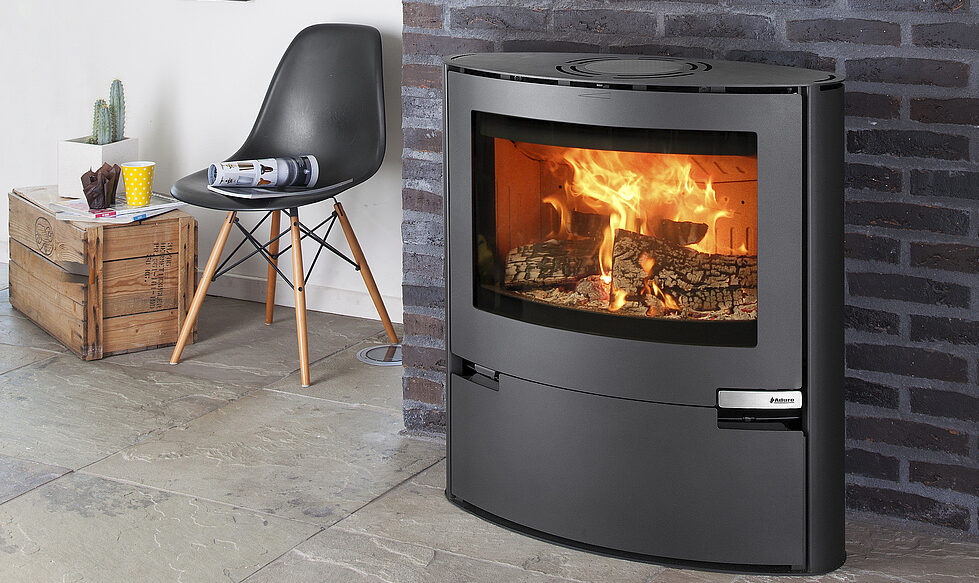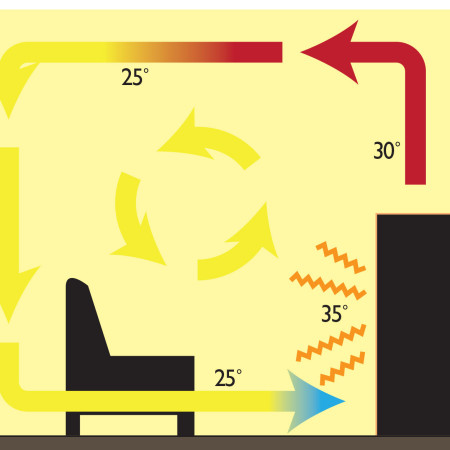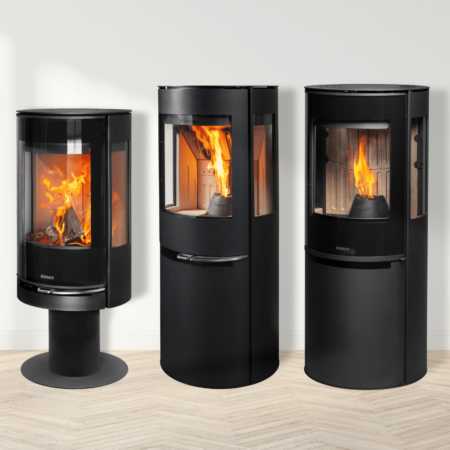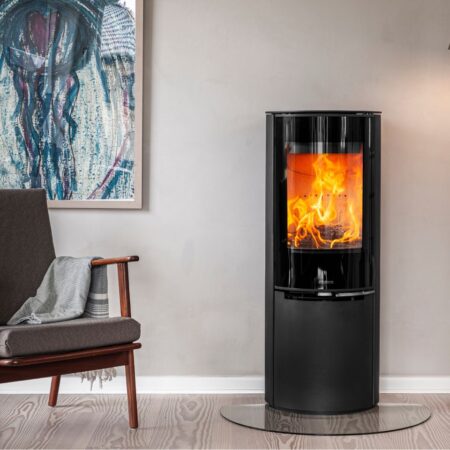First step
There are many different wood burning stoves on the market and it’s easiest to let your own taste decide when you make the choice. However, there are some things you should consider doing before investing in a new wood burning stove. For example:
- Do you want a classic cast iron design or a modern sheet iron design?
- Will the wood burning stove be the only source of heating or will it supplement an oil-fired burner or electrical heating?
- How close will it be situated to material that can burn?
- How many square metres must the wood burning stove heat?
- Should it be easy to operate?
Is there a difference in heat distribution?
There are two different kinds of wood burning stoves: convection and radiant heat. Convection stoves are part of a new generation of wood burning stoves which distribute the heat by air circulation and create an even and comfortable heat both in the stove and in the adjacent rooms. Radiant heat stoves concentrate the heat around the stove.
Read more about the different types of heat.
How big should my wood burning stove be?
It’s important to find the right size of your wood burning stove so it’ll fit your needs. The choice depends on the size of your house, insulation, furnishing, and where the stove will be situated. How much heat the wood burning stove can liberate is measured in kilowatt (kW). As a rule of thumb, you can expect that:
- 1 kW heats 10 badly insulated square metres
- 1 kW heats 20 well insulated square metres
Do not buy a wood burning stove too big. Most people will tend to fire too little and with too low a temperature so the heat won’t be very strong. That’ll create bad combustion.
Keep in mind that the wood burning stoves with the Nordic Ecolabel have been tested and can have complete combustion at different levels which is a big advantage.
TIP: By firing with long intervals and bigger pieces of wood, you can typically get the wood burning stove to perform 50 % better. By firing with smaller pieces of wood and adding wood more often, the wood burning stove’s efficiency will be increased a bit. You should keep the optimal size of wood in mind and try to use that size or pieces that are neither too big nor too small compared to the optimal size.
Environmental certifications and labels
Wood burning stoves that are eco-labelled will ensure that you get an efficient and eco-friendly wood burning stove. There are different kinds of labelling, for example the Nordic Ecolabel, EN13240 and NS3059 which all help create a better environment. The labels can help you navigate so you’ll find the most eco-friendly and efficient wood burning stove. You should keep in mind that there are some labels which the producers themselves can decide whether or not to put on so it’s not necessarily a guarantee if your new wood burning stove is labelled.
Read more about standards and certfications
Is my chimney good enough?
The chimney is by no means unimportant since it is the engine of the wood burning stove and fuels combustion. If you don’t have a well functioning chimney with the correct draft, the wood burning stove won’t burn properly. Have your chimney sweep check your chimney.
Air wash system in wood burning stoves
The air wash system in a wood burning stove consists of heated air which is ducted to wash over the inside of the glass, preventing the glass from sooting. It’s an advantage to choose a wood burning stove with a built-in air wash system if you want a continuing nice and clear view of the flames.
Easy to use
If you want a wood burning stove which is easy to use and practically self-propelled, a wood burning stove with an automatic control device is the answer. It automatically regulates the air supply and you can lean back and just enjoy the view of the flames.
The optimal and most eco-friendly combustion depends on precisely regulated air supply in small intervals – especially during the firing. Practically, this doesn’t happen because you’re doing other things once you’ve got the fire started. That’s why a new wood burning stove which regulates the air supply automatically can be a very good investment.
You can read more about wood burning stoves with automatic control device




